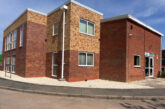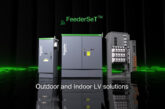
The experts at Schneider Electric help us to better understand surge protection and how contractors can determine whether it is required.
Electronic equipment has played a vital role in how our homes and businesses function for many years, but now so more than ever. The 18th Edition has brought about changes to support this, putting a focus on Surge Protection Devices to make our residential and commercial environments safer.
90% of sockets today run power-sensitive equipment. In the home, this equipment is at risk of damage or can even be destroyed if an electrical surge occurs. In commercial applications, disruption or downtime can have a huge impact on essential services and crucial business operations. In today’s world, protection against this risk is imperative.
An electrical surge, or transient overvoltage, is a short duration voltage peak occurring between two or more conductors. They can vary from a few volts to thousands of volts, and can be caused by lightning, damage to power lines, or internal sources such as inductive load switching.
In the 18th Edition, Section 443 no longer focuses specifically on lightning – it now also includes switching overvoltage. Although lightning is still a risk, particularly in the east of the country, the regulations now recognise that the applications most typically impacted by electrical surges in the UK are those located near to sites with large switching loads, such as wind farms and industrial areas.
Use of the AQ criteria (conditions of external influence for lightning) for determining if protection against transient overvoltage is needed is no longer included in BS 7671. Instead, new Regulation 443.4 requires protection for buildings providing hospital care, public services, cultural heritage, and accommodation with multiple flats or apartments.
In all other circumstances, a risk assessment must be carried out to review whether surge protection is required. This risk assessment involves a calculated risk level (CRL) formula, for which the installer must have knowledge of the final 1km of cabling, including the lengths of the high and low voltage cables overhead and underground. If the CRL is less than 1,000, protection is required. If no risk assessment is performed, surge protection must be installed.
It is likely that surge protection can be justified in virtually all residential applications, as most appliances around the home – such as boilers, TVs, laptops and washing machines – all include some form of electronic control. When considering the level of investment required to purchase these items, it is easy to see how the combined cost of equipment at risk far outweighs the cost of the devices required to provide additional protection.
Schneider Electric offers a comprehensive range of devices to provide a complete residential circuit protection system with Easy9+, including Surge Protection Devices.
Connected in parallel to the incoming breaker, the SPD has high impedance. Once the overvoltage appears, the impedance of the device decreases, therefore allowing the surge current to travel through the SPD and bypass sensitive equipment. The incoming MCB will safely trip in case of incorrect wiring, which protects the installation when the SPD is at the end of its life, and also enables isolation for maintenance.
To find out more about Easy9+ surge protection and the 18th Edition, visit: schneider-electric.co.uk/electricianpartner









